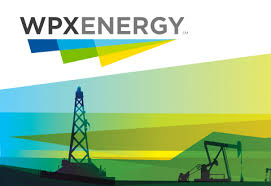
Saying 2018 was a “pivotal year”, management at Tulsa’s WPX Energy reported increased oil volumes and fourth quarter 2018 net income.
The company said unaudited fourth quarter 2018 net income was $353 million or 83 cents a share on a diluted basis. A year ago the company reported a net loss of $24 million. The full-year 2018 unaudited net income was $234 million or income of 57 cents a share. Fourth quarter adjusted net income was $9 million or 2 cents a share.
Fourth quarter oil volumes were 96,000 barrels a day, which was 49 percent higher than a year ago and 15 percent higher over the third quarter of 2018.
Adjusted EBITDAX was $1,081 million in 2018, including $306 million in the fourth quarter. Cash flow from operations, inclusive of hedge impact, was $883 million in 2018, including $231 million in the fourth quarter. A reconciliation accompanies this release.
“Without question, 2018 was a pivotal year for WPX. We reduced our operating areas from three to two, paid down nearly $500 million of senior notes, achieved our deleveraging goal and continued to benefit from our midstream strategy,” said Rick Muncrief, chairman and chief executive officer.
For the 2019 outlook, WPX plans a 23 percent drop in capital spending compared to late last year. But it also expects higher production.
The plan funds five rigs in the Delaware and three in the Williston. Planned increases in production will materialize more significantly in the latter half of the year based on the cadence of WPX’s 2019 development program.
The company’s 2019 capital plan is cash flow neutral at $50 WTI oil and cash flow positive at current commodity prices.
Earlier this month, WPX announced two divestitures and one acquisition. The sale of the company’s Nine Mile Draw assets closed, as well as its purchase of surface acreage in the Permian Basin.
The sale of WPX’s equity interest in WhiteWater Midstream’s Agua Blanca natural gas pipeline system is on track to close in the first quarter.
Additionally, Delaware production volumes are benefitting from the flow assurance created by WPX’s strategic investments in significant midstream infrastructure that came online in 2018, including a joint venture gas plant, the WhiteWater system and the Oryx crude oil transport system.
There were 11 two-mile laterals in the fourth-quarter completions. Eight of the completions in the quarter had 24-hour peak rates in excess of 3,000 Boe/d. The highest rate occurred on the Pecos State 39-46B-2H well in the Wolfcamp A interval which posted 5,478 Boe/d (48% oil).
The average peak rate on the four-well Pecos State pad was nearly 4,500 Boe/d, including 5,210 Boe/d on the Pecos State 39-46A-1H well.
In late December, WPX’s new gas plant in the Delaware Basin exceeded 85 percent utilization of the first 200 MMcf/d cryogenic train and produced approximately 19,000 bbl/d of NGL. This facility is part of a 50/50 joint venture that is operated by Howard Energy Partners.
Williston Basin production averaged 56.8 Mboe/d in fourth-quarter 2018, up 17 percent vs. the sequential quarter and 47 percent higher than the same period in 2017.
WPX’s fourth-quarter Williston oil volumes of 47,700 bbl/d increased 17 percent vs. third-quarter 2018 and were 44 percent higher than a year ago.
Oil and NGL sales of $508 million accounted for 93 percent of WPX’s fourth-quarter total product revenues of $544 million. Quarterly oil revenue grew 49 percent vs. the same period in 2017 driven by higher production volumes. Total oil sales in 2018 were $1,790 million.





